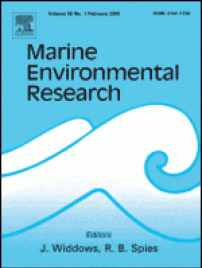 In this paper, we describe and evaluate the construction of a metatranscriptome dataset from a pelagic crustacean zooplankton community. We sampled zooplankton in one marine station, named LW02, in the North Sea, in both winter and summer, and generated transcripts using Oxford Nanopore Technology (ONT), a third-generation nanopore-based sequencing technology. ONT is, uniquely, capable of sequencing RNA directly, rather than depending on reverse transcription and PCR, and applicable to be used directly in the field. We found that metatranscriptomics is capable of species detection, including screening for the presence of endoparasites, hence competing with morphological identification. The most abundant mRNA transcripts with known function coded for essential metabolic processes. Although small in scale, our study provides the basis for future efforts to characterize the metatranscriptome of marine zooplankton communities and its application in biomonitoring programs.
In this paper, we describe and evaluate the construction of a metatranscriptome dataset from a pelagic crustacean zooplankton community. We sampled zooplankton in one marine station, named LW02, in the North Sea, in both winter and summer, and generated transcripts using Oxford Nanopore Technology (ONT), a third-generation nanopore-based sequencing technology. ONT is, uniquely, capable of sequencing RNA directly, rather than depending on reverse transcription and PCR, and applicable to be used directly in the field. We found that metatranscriptomics is capable of species detection, including screening for the presence of endoparasites, hence competing with morphological identification. The most abundant mRNA transcripts with known function coded for essential metabolic processes. Although small in scale, our study provides the basis for future efforts to characterize the metatranscriptome of marine zooplankton communities and its application in biomonitoring programs.News
 In this paper, we describe and evaluate the construction of a metatranscriptome dataset from a pelagic crustacean zooplankton community. We sampled zooplankton in one marine station, named LW02, in the North Sea, in both winter and summer, and generated transcripts using Oxford Nanopore Technology (ONT), a third-generation nanopore-based sequencing technology. ONT is, uniquely, capable of sequencing RNA directly, rather than depending on reverse transcription and PCR, and applicable to be used directly in the field. We found that metatranscriptomics is capable of species detection, including screening for the presence of endoparasites, hence competing with morphological identification. The most abundant mRNA transcripts with known function coded for essential metabolic processes. Although small in scale, our study provides the basis for future efforts to characterize the metatranscriptome of marine zooplankton communities and its application in biomonitoring programs.
In this paper, we describe and evaluate the construction of a metatranscriptome dataset from a pelagic crustacean zooplankton community. We sampled zooplankton in one marine station, named LW02, in the North Sea, in both winter and summer, and generated transcripts using Oxford Nanopore Technology (ONT), a third-generation nanopore-based sequencing technology. ONT is, uniquely, capable of sequencing RNA directly, rather than depending on reverse transcription and PCR, and applicable to be used directly in the field. We found that metatranscriptomics is capable of species detection, including screening for the presence of endoparasites, hence competing with morphological identification. The most abundant mRNA transcripts with known function coded for essential metabolic processes. Although small in scale, our study provides the basis for future efforts to characterize the metatranscriptome of marine zooplankton communities and its application in biomonitoring programs.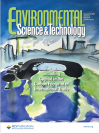 In the present study, we aimed to test the protectiveness of the bioavailability-normalisation procedure, with its associated hazardous concentrations for x% of the species (HCx), that is currently implemented to derive environmental threshold concentrations for Ni in European environmental legislative frameworks. We exposed a natural plankton-dominated community to three constant Ni concentrations during a 56d-microcosm experiment under high DOC conditions. The effects of the bioavailability-normalised HC5 and HC50 were evaluated at the level of the community structure, community functioning and individual species abundances.
In the present study, we aimed to test the protectiveness of the bioavailability-normalisation procedure, with its associated hazardous concentrations for x% of the species (HCx), that is currently implemented to derive environmental threshold concentrations for Ni in European environmental legislative frameworks. We exposed a natural plankton-dominated community to three constant Ni concentrations during a 56d-microcosm experiment under high DOC conditions. The effects of the bioavailability-normalised HC5 and HC50 were evaluated at the level of the community structure, community functioning and individual species abundances.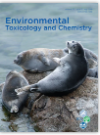 In this research we investigated whether or not marine algae growth was affected when exposed to environmentally realistic mixtures of chemicals collected from the Belgian part of the North Sea (BPNS). To explore this, we used a specific sampling technique that “filters” chemicals from the seawater and collects them in a way allowing to transfer these mixtures from the field to the laboratory. Once brought to the lab, we determined the concentration levels of 88 personal care products, pesticides and pharmaceuticals. Next, we exposed marine algae to the so collected mixtures of chemicals and recorded the algae’s growth over three days. We surprisingly observed growth stimulation for those mixtures with less sample handling and short storage while those undergoing repeated handling and longer storage showed no effects. In an explorative try to define the differences in the mixture composition of the effect- and no-effect causing samples, we were indeed able to define these differences but our findings could not be linked to the biological effects observed. In conclusion, we have shown that environmentally realistic mixtures of contaminants collected in the BPNS can enhance the growth of a marine algae species but it remains challenging to define those substances within these mixtures that actually cause effects on algae growth.
In this research we investigated whether or not marine algae growth was affected when exposed to environmentally realistic mixtures of chemicals collected from the Belgian part of the North Sea (BPNS). To explore this, we used a specific sampling technique that “filters” chemicals from the seawater and collects them in a way allowing to transfer these mixtures from the field to the laboratory. Once brought to the lab, we determined the concentration levels of 88 personal care products, pesticides and pharmaceuticals. Next, we exposed marine algae to the so collected mixtures of chemicals and recorded the algae’s growth over three days. We surprisingly observed growth stimulation for those mixtures with less sample handling and short storage while those undergoing repeated handling and longer storage showed no effects. In an explorative try to define the differences in the mixture composition of the effect- and no-effect causing samples, we were indeed able to define these differences but our findings could not be linked to the biological effects observed. In conclusion, we have shown that environmentally realistic mixtures of contaminants collected in the BPNS can enhance the growth of a marine algae species but it remains challenging to define those substances within these mixtures that actually cause effects on algae growth.We are happy to announce that our colleague, Jonathan De Raedt, defended his dissertation to earn his doctoral degree on March 7, 2019! During his PhD, his research focused on the combined effects of dispersal and chemical stressors on algae communities.
Congratulations, Jonathan! We wish you the best of luck in all your future endeavors, wherever these may take you!
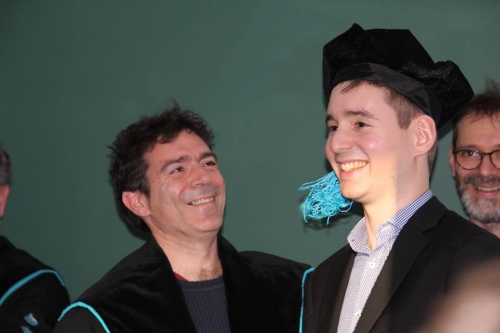
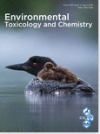


The laboratory of Environmental Toxicology and Aquatic Ecology, Environmental Toxicology Unit - GhEnToxLab (Ghent University) is looking for a full time Scientific Researcher.
1-year research project: Population models to improve ecological risk assessment of nickel
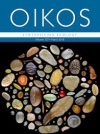 In this study, we assess the relationship between beta-diversity (measured as Bray–Curtis dissimilarity) and regional productivity (measured as biovolume) under various levels of a stressor flux in meta-ecosystems that were composed of two marine micro-algae communities. We created heterogeneity by exposing one of the two communities to a herbicide and manipulated regional diversity by applying a dispersal gradient, which decreased beta-diversity.
In this study, we assess the relationship between beta-diversity (measured as Bray–Curtis dissimilarity) and regional productivity (measured as biovolume) under various levels of a stressor flux in meta-ecosystems that were composed of two marine micro-algae communities. We created heterogeneity by exposing one of the two communities to a herbicide and manipulated regional diversity by applying a dispersal gradient, which decreased beta-diversity.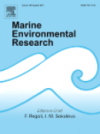 This study recorded temporal and spatial patterns of the FA profiles of two dominant calanoid copepods within the BPNS: Temora longicornis (Müller, 1785) and Acartia clausi (Giesbrecht, 1889). By means of distance-based linear modelling and by applying multi model inference to generalized additive models, environmental stressors were linked to patterns of the FA profiles of these species.
This study recorded temporal and spatial patterns of the FA profiles of two dominant calanoid copepods within the BPNS: Temora longicornis (Müller, 1785) and Acartia clausi (Giesbrecht, 1889). By means of distance-based linear modelling and by applying multi model inference to generalized additive models, environmental stressors were linked to patterns of the FA profiles of these species.
 Sea spray aerosols (SSAs) have profound effects on our climate and ecosystems. They also contain microbiota and biogenic molecules which could affect human health. Yet the exposure and effects of SSAs on human health remain poorly studied. Here, we exposed human lung cancer cells to extracts of a natural sea spray aerosol collected at the seashore in Belgium, a laboratory-generated SSA, the marine algal toxin homoyessotoxin and a chemical inhibitor of the mammalian target of rapamycin (mTOR) pathway.
Sea spray aerosols (SSAs) have profound effects on our climate and ecosystems. They also contain microbiota and biogenic molecules which could affect human health. Yet the exposure and effects of SSAs on human health remain poorly studied. Here, we exposed human lung cancer cells to extracts of a natural sea spray aerosol collected at the seashore in Belgium, a laboratory-generated SSA, the marine algal toxin homoyessotoxin and a chemical inhibitor of the mammalian target of rapamycin (mTOR) pathway.
